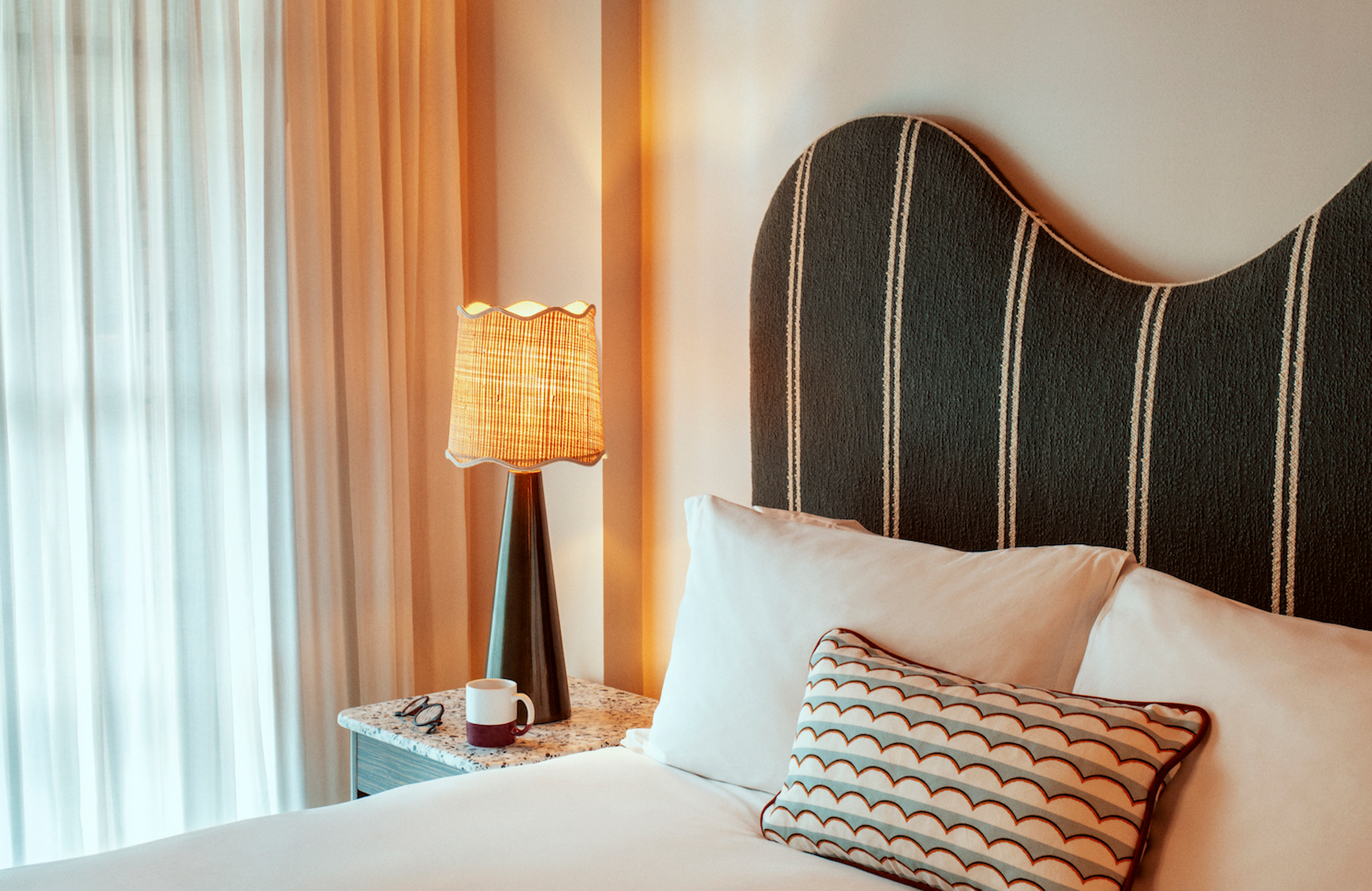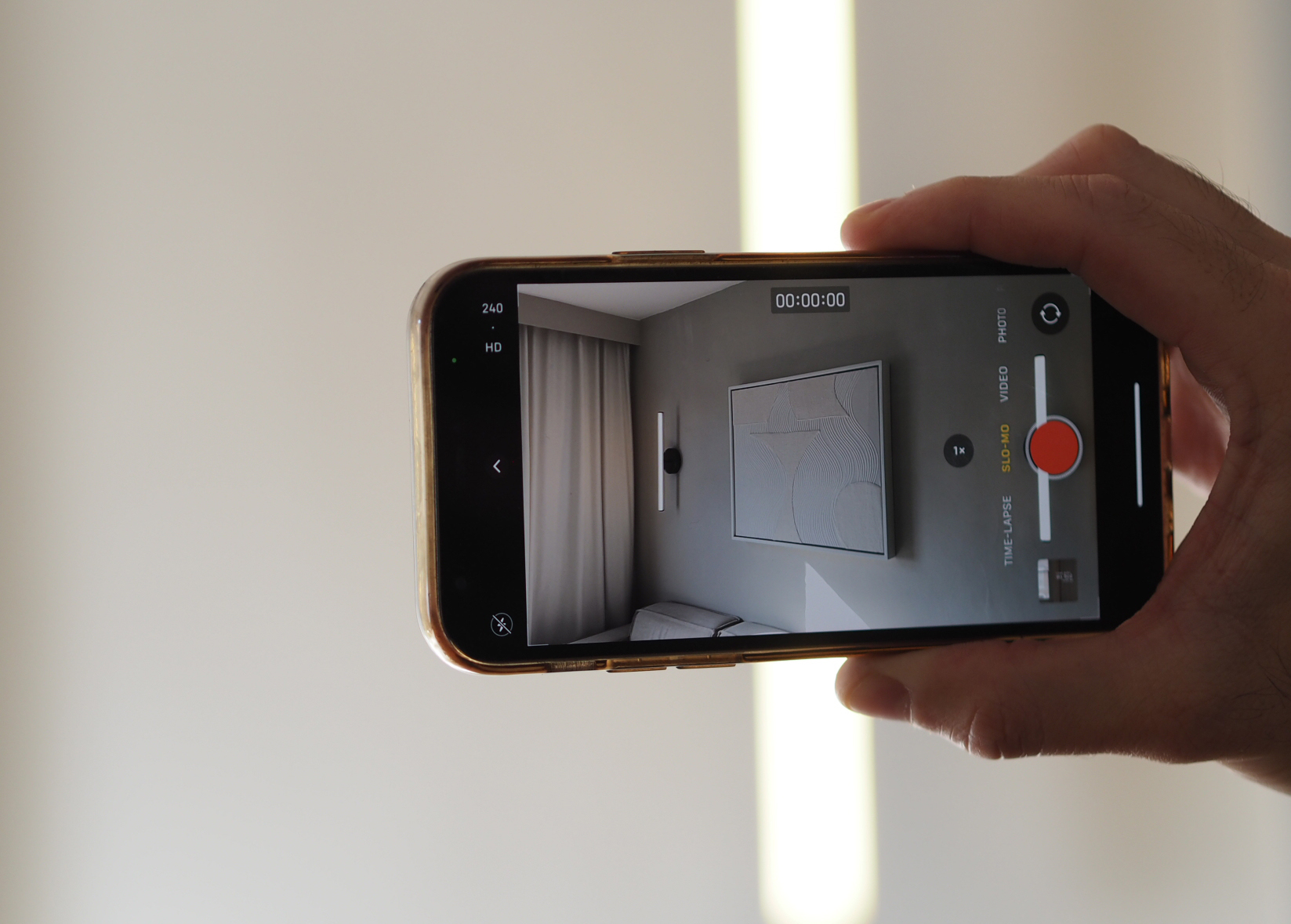This genius trick will uncover your home's problem lighting, using just your phone's camera
Flickering lights could be the reason for your afternoon headaches. Here's how to test whether your lighting has the potential to make you unwell using just your phone


Could your lighting be bad for your health? It seems anything can damage your health these days, and unfortunately, artificial lighting is no exception. It's flickering, to be precise, that you need to look out for - but why do lights flicker, and how is it harmful?
In the modern world, it's nearly impossible to avoid artificial lighting. Think about it, it's everywhere. Not only do we depend on light bulbs indoors when it's dark outside, but they're used in technology, too. Our laptops, phones and TV screens all depend on a light source in order for the screen to work.
I'm sure you've seen a fluorescent lamp flicker before, or maybe you've noticed a light bulb dim slightly. Well the truth is, all lights flicker, and they actually do it all the time, you just don't always notice it. The danger is that this flickering can prove damaging to our health, especially when it's more intense.
Luckily, there's a fascinating - and surprising - way to check if your lights are flickering too much, and all it takes is a smartphone. With some help from a biophilic expert, we've delved into the science behind this phenomenon, alongside some advice on how to reduce their harmful impact, whether from a laptop screen or your living room lighting.

Marianna Popejoy is an interior designer specializing in biophilic design. She’s worked on numerous projects from outdoor bathrooms and garden layouts, to jungle-inspired interiors. Her work and home have been featured globally by Architectural Digest and Apartment Therapy and she is currently in the process of writing a book aimed at helping people make realistic, achievable changes to their homes by incorporating elements from nature.
Why is flicker something we should be concerned about?
Artificial lighting can have a damaging effect on our circadian rhythm, better understood as the sleep/wake cycle. It's not surprising then, that as the nights draw in and our days get shorter, an increased use of lighting indoors could be negatively impacting our health.
'Studies have shown that flickering light bulbs and the LED lighting flicker emitted from digital screens can cause numerous physical health problems and measurable physiological changes,' biophilic interior designer Marianna Popejoy of The Wooden Hill tells us. 'When exposed to flickering light, our eyes have to rapidly adjust to the changing light output which places an unnecessary stress on our eye muscles.'
If you've ever found yourself with a headache or eye strain after being sat in front of the computer for too long (let's face it, we've all been there), flickering lights are almost certainly the culprit. This is especially common for those who work in office jobs, who may feel particularly fatigued after a day at work despite being sat down for the majority of the day. We all know that cutting out screen time before better can help you sleep better, too. In both cases, flickering light is also to blame.
The Livingetc newsletters are your inside source for what’s shaping interiors now - and what’s next. Discover trend forecasts, smart style ideas, and curated shopping inspiration that brings design to life. Subscribe today and stay ahead of the curve.
'Prolonged exposure can lead to health issues such as headaches, fatigue, blurred vision, vertigo, panic attacks and even some chronic neurological conditions,' Marianna explains. 'Even more alarming when you consider the increased amount of time our children are spending on digital screens at a time when their bodies and minds are constantly growing, unfortunately making them much more susceptible to the problems caused by artificial light flicker than adults.'
How can you capture flicker that's invisible to the naked eye?

Now I know what you're thinking; 'but my lights don't flicker!' Surely if you can't see your light bulbs or screen flickering, you must be fine, right?
Well, not quite. In most cases, flickering light is in fact invisible to the naked eye. 'You may imagine “flicker” as being a full on/off situation, similar to strobe lighting,' Marianna says, 'but in fact, any fluctuation in brightness of light is classified as flicker.'
'We as humans can only discern flicker up to 100 hertz with the naked eye - what we would refer to as “visible flicker”,' she explains. 'Flicker of a frequency higher than 100 hertz - or “invisible flicker” - would not be visible to the human eye.'
So, how do know if your devices or the lights in your home are bad for your health? You might think this is a job for a hi-tech piece of kit, but all you actually need is a phone camera. 'A quick and easy way to capture invisible flicker and see it for yourself is with the help of a phone camera lens. Just open the slow-motion mode of the camera and point it towards the source of light,' Marianna explains. 'There will be a visible distortion in what you see on your screen.'
If you've ever tried to take a photo of a computer or a television screen with your phone, you'll probably have noticed a distorted image that makes it harder to see or read. According to Marianna, this is flicker at play. The bigger the distortion through your phone, the more intense the light flicker.
What type of lighting is prone to flicker?
Of course, not all lighting is the same, so you may be wondering whether certain types pose a greater risk. The truth is, all mains-powered light sources flicker, and they actually flicker all the time. This happens regardless of whether they're incandescent, halogen, fluorescent or LED. However, once you've discovered this magic phone trick, you'll undoubtedly find that intense flicker is more common in LEDs. So why is flickering far more noticeable after our modern lighting transition to these energy-efficient bulbs?
'The flicker was less noticeable on old, traditional incandescent bulbs, because the bulb’s residual heat kept the filament glowing between flickers, which was more likely a side-effect of the inefficiency of the bulbs than anything else,' Marianna tells us. 'This has resulted in the misconception that incandescent bulbs have “no flicker” while LEDs have become the primary culprit of flicker issues.'
In fact, according to Marianna, most modern LEDs perform with less flicker than incandescent bulbs. Rather than being connected to the mains supply, LEDs are powered using a self-contained LED driver which acts as its own power supply. This circuit provides the right amount of electrical current to the light bulb, reducing flicker.

Can we prevent flicker completely?
Unfortunately there's no way to completely eliminate the flicker in mains-powered lights and screens. 'This is because our power grid runs on an alternating current and the fast and cyclical voltage change that feeds into the light bulbs is what causes the problem of flicker in the first instance,' Marianna notes.
Fluctuation in your home's voltage is also normal as we power many things at once, but intense and obvious flickering could be a sign of an overloaded circuit which can put your home’s electrical system at risk. Be sure to call an electrician if you notice this.
While we can't prevent it, we can try to reduce the amount of flickering light we're exposed to using biophilic design ideas. The trick is to avoid it. Encourage more natural light into your homes by opening your curtains or blinds, placing desks close to windows, or installing skylights if necessary. And don't forget to get plenty of time outside each day.
'Distance yourself from technology, both literally and metaphorically,' Marianna adds. 'Use physical distance from flickering light to reduce the intensity and the amount of flicker that you are exposed to, and take regular visual refreshments to break up the time spent on digital devices.'
While the movie theater setting while watching TV is cozier, the contrast of darkness and bright light will result in the flicker having a greater impact on our eyes. As Marianna notes: 'Philips Hue has some amazing lightbars on the market that can help to add soft ambient lighting around your TV or computer screen which will help to mitigate this effect without ruining the ambiance.'

Lilith Hudson is a freelance writer and regular contributor to Livingetc. She holds an MA in Magazine Journalism from City, University of London, and has written for various titles including Homes & Gardens, House Beautiful, Advnture, the Saturday Times Magazine, Evening Standard, DJ Mag, Metro, and The Simple Things Magazine.
Prior to going freelance, Lilith was the News and Trends Editor at Livingetc. It was a role that helped her develop a keen eye for spotting all the latest micro-trends, interior hacks, and viral decor must-haves you need in your home. With a constant ear to the ground on the design scene, she's ahead of the curve when it comes to the latest color that's sweeping interiors or the hot new style to decorate our homes.